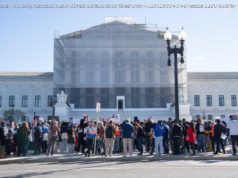The FAA had its chance. It’s time for a new approach: Our view
Most everyone driving a car today has instant access to apps with GPS to navigate the quickest routes through traffic. But when these same people get on a jetliner, controllers are still using radar, a system that’s been around since World War II and can’ t take full advantage of GPS to help planes take the most efficient routes through the skies.
Something’s wrong with this picture, and it’s the failure of the Federal Aviation Administration to make good on decades of promises to modernize air traffic control with advanced satellite-based technology in a system called “ NextGen .”
On Monday, President Trump endorsed getting the job done by creating a private, non-profit corporation that would apply business principles and provide a steady stream of financing. This change would free air traffic control modernization from two major sources of delay: the bureaucratic process used to select contractors, and Congress’ crazy, on-again, off-again budget process that disrupts long-term planning.
The FAA has been trying for decades to modernize the system. While the agency has had some success, major projects have faced cost increases and schedule delays because of systemic problems, according to testimony in the House last month by the Transportation Department’s inspector general. These include “overambitious plans, unreliable cost and schedule estimates, unstable requirements… and ineffective contract and program management.” That’s enough to convince anyone that it’s time for a new approach.
The idea of putting a non-profit company in charge — a plan most of the major airlines have been promoting for years — has considerable merit. (The FAA would remain in charge of safety functions.) Other countries that have successfully privatized their air traffic control systems include Canada, France, Germany and the United Kingdom.
OPPOSING VIEW:
But the plan also has risks and complications. The U. S. has more operations, more air traffic facilities and employs more controllers than the four other nations combined.
Foes worry, with some justification, that the major airlines could end up with too much power over the new operation, allowing them to hold sway over decisions involving fees paid by passengers, noisy air traffic routes over homes and air service to rural areas.
Trump’s plan calls for a 13-member “professional” board to manage the new operation, with two members chosen from an airline list. A similar House measure last year would have given airlines four seats, the largest bloc on the board. It’s hard to know where this proposal will go in Congress, where airline lobbyists hold far more power than consumers. Nor is it clear whether there are any board seats to represent the public interest.
In remarks Monday, the president said the privatization plan „will get you where you need to go more quickly, more reliably, more affordably and, yes … on time.“ True, it would reduce air traffic delays, but planes are also late because of weather, lack of runway space and the airlines’ own computer glitches.
Even so, major change is needed. As the old saying goes, the definition of insanity is doing the same thing over and over and expecting a different result. If Congress can create a board that represents all interests — not just those of the airlines — this approach could work.
USA TODAY’s editorial opinions are decided by its Editorial Board, separate from the news staff. Most editorials are coupled with an opposing view — a unique USA TODAY feature.
To read more editorials, go to the Opinion front page or sign up for the daily Opinion e-mail newslette r.






